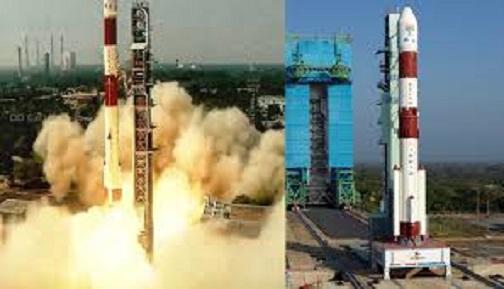| Translate This News In |
|---|
On Sunday morning, India successfully launched Brazil’s earth observation satellite Amazonia-1 into orbit in textbook fashion.
The Polar Satellite Launch Vehicle-C51 (PSLV-C51) launched with 19 satellites, including Amazonia-1, from the first launch pad at 10.24 a.m.
The 44.4 meter tall PSLV-C51 rocket blasted off from the first launch pad here at 10.24 a.m., laden with 19 foreign and Indian satellites, and slowly rose into the sky with a thick orange flame trailing behind it.
As it rose, the rocket picked up speed and made a rolling thunder sound.
The rocket slung its primary passenger, the Brazilian satellite Amazonia-1, into its intended Sun Synchronous Orbit 17 minutes into its flight.
The National Institute for Space Research’s Amazonia-1 optical earth observation satellite (INPE).
According to the Indian Space Research Organisation (ISRO), this satellite would strengthen the existing structure by providing users with remote sensing data for monitoring deforestation in the Amazon region and analyzing diversified agriculture across Brazilian territory.
India has launched 329 foreign satellites so far. If all goes well, India will complete the mission by orbiting 342 foreign satellites for a fee.
India’s first space mission in 2021 is expected to last 1 hour, 55 minutes, and 7 seconds, making it one of the longest for a PSLV rocket.
NewSpace India Ltd is a fully commercial rocket company (NSIL).
Four IN-SPACe satellites (three UNITYsats from a consortium of three Indian academic institutes (Jeppiaar Institute of Technology, Sriperumbudur, G.H.Raisoni College of Engineering, Nagpur, and Sri Shakthi Institute of Engineering and Technology, Coimbatore), and one Satish Dhawan Sat from Space Kidz India) with an engraved picture of Prime Minister Narendra Modi) are among the 18 co-passenger satellites.
ISRO is launching a PSLV rocket with two strap-on booster motors for the third time.
The PSLV is a four-stage, four-engine expendable rocket that uses solid and liquid fuels alternately in its normal configuration. Six booster motors will also be strapped to the first stage to provide more thrust during the early stages of flight.
The PSLV rocket that took to the skies on Sunday, however, was the DL variant, which had only two strap-booster motors.
On January 24, 2019, the Microsat R satellite was launched into orbit for the first time using this rocket variant.
PSLVs with two and four strap-on motors, the larger PSLV-XL, and the Core Alone variant without strap-on motors are all available from the Indian space agency.
The rocket chosen for a mission is determined by the weight of the satellite and the orbit in which it must be orbited.
Regardless, the PSLV-C51 mission is one of the most lengthy in history.
The rocket will launch the 19 satellites into Sun Synchronous Orbit in 1 hour, 55 minutes, and 7 seconds, as planned, according to its flight plan.
The rocket’s fourth stage engine will be cut off and restarted several times during its flight, the first of which will occur at 16 minutes.
The rocket’s engine will be restarted for about nine seconds just over an hour into its flight before being shut down once more.
The rocket’s engine will be restarted for eight seconds after 1 hour, 49 minutes, and 52 seconds and the 18 piggyback satellites will be launched into orbit.


















